There are probably as many “Christmas Berries” as there are “Indian Potatoes.” Both are very over used and misapplied names. Locally we have at least two Christmasberries with red berries that can fruit over the holiday season. Lycium carolinianum will produce from now into spring. Technically it can fruit anytime but the plants I’ve seen favor the springtime. Its claim to minor fame is that it is our local Goji berry.
I marvel at the odd characteristics of this species every time I see it. First, it’s salt-tolerant. The only place I’ve seen it growing is on land often flooded by brackish water. Next, is it is always covered with Ramalina lichen. Perhaps there is a symbiotic relationship going on. Maybe the acidic Ramalina keeps certain insects away, or other fungi. Third is in the Solanaceae family although it’s a shrub. And fourthly it has an edible berry which just might be very good for you nutritionally. To read more about our local Goji go here. A video I made four years ago is here. Note in the video I had a senior moment and called the lichen Usnea instead of Ramalina.
Our local Plantagos are happy now. The native, P. virginica can be spotted nearly everywhere. I have not seen any seeding yet so there is still a good amount of season left. Later in the year we will see the English or Strap Plantain sending out its long seed spike. This past weekend in two different locations there were plenty of P. major to see (around the Orlando Museum of Art and at the Education Center in Spruce Creek Park at Port Orange.) An import from Europe it is common in parks or where turf has been imported for ground cover. There are reports our P. virginica is invading Asia. All Plantagos have edible young leaves, raw or cooked, as well as the seed spike and seeds. To read more about the Plantagos go here.
Mass botanical confusion this time of year is large patches of Black Medic which also looks a lot like Hop Clover. I often write there are no “look-alikes” if one looks closely enough, and that is true. However, with Black Medic and Hop Clover you have to look very, close. Fortunately it is mostly just Black Medic growing this time of year locally. In time it will produce black seeds, which makes it quite obvious. Hop Clover produces brown seeds. Black Medic is listed as a Native American food but it’s from the area of Iran and was first mentioned in seed catalogues in the United States in the early 19th century. You can read more about Black Medic here.
In nearly every class and daily on line I am asked if I can identify a plant if a picture is sent to me. I say I will try and also suggest the sender join the Green Deane Forum. There’s a UFO page there, Unidentified Flowering Objects. On the forum we chat about foraging — and other topics — every day along with techniques to harvest and use the bounty you have found. And it’s not just about Florida or the southeast. There are members from all around North America and the world. The link to join is on this page just to the right of this article. You do have to pick a screen name and the forum let members private message each other. There are only three rules: Keep it civil, keep it clean, and try to avoid mentioning Wikipedia (which Green Deane has a significant dislike for.) Recent topics include Blueberries in January? UFO Weed, Darryl Patton Herbalist, Duckweed, Shaggy Mushy, Mystery Tree, Gnarly Mushroom, Brain Tan, Vegetarian Nightmare, Linguist Overdrive, and From the Frightening Mailbag.
We’re a little more than two weeks away from the Florida Earthskills gathering in Hawthorn Florida, Feb 5-8. It’s an opportunity to learn, share and experience sustainable living skills. I have taught there for the last two years and will be there again this year, teaching on Friday morning and Saturday morning. That’s intentional so I can attend two mushroom classes in the afternoon. There are virtually dozens of classes to sign up. Other classes include wild medicine, wild foods, didgeridoo making and playing, buckskin sewing, fire making, yoga, insect study, cabbage palm basketry, bow making, bird songs, atlati throwing, permaculture, mushrooms and a whole lot more, several somethings for everyone. To learn more about this Florida Earthskills gathering and sign up go here.
Later in February is the Florida Herbal Conference, Feb 27 to March 1st, I’ve taught edible plants there for the last three years and will be there again this year with three classes. I wake folks up with a 7 a.m. class on Saturday and Sunday and a second class on Saturday a 9 a.m. The conference is a must for all southern herbalists and well as those northern ones who want to escape the cold and study their craft in the dead of winter. It always has interesting speakers and great classes. While there is some cross over between Earthskills and Herbalism the conferences are sufficiently different to justify attending both. For more information and to register go here.
Foraging Classes: Saturday, January 24th, Red Bug Slough Preserve, 5200 Beneva Road, Sarasota, FL, 34233, 9 a.m.; Sunday, January 25th, Bayshore Live Oak Park, 23000 Bayshore Rd., Port Charlotte, FL 33980, 9 a.m., meet at the parking lot at the intersection of Bayshore Road and Ganyard Street. For more information or to sign up for a class go here.
In police work there is Chain of Possession. Evidence is never out of custody. The information on where and when the evidence is collected, who has it, and where it’s kept is constantly recorded. With food we might call it the Chain of Contamination and it might frighten us.
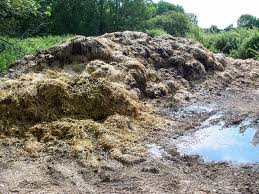 First it could be a genetically modified plant, one that has not been proven safe by being eaten over centuries by hundreds of thousands if not millions of people. Apples have been proven safe. GMO corn or soybeans have not. Then there is the soil and water. They could be polluted by a variety of means. The ground might also have real old fashion manure on it, dog to human — think Ebola, Cholera — or it might be artificial manure called fertilizer. As for water, is there any fresh, wholesome water any more? If you are not pumping from your own well, someone is putting something into your water somewhere.
First it could be a genetically modified plant, one that has not been proven safe by being eaten over centuries by hundreds of thousands if not millions of people. Apples have been proven safe. GMO corn or soybeans have not. Then there is the soil and water. They could be polluted by a variety of means. The ground might also have real old fashion manure on it, dog to human — think Ebola, Cholera — or it might be artificial manure called fertilizer. As for water, is there any fresh, wholesome water any more? If you are not pumping from your own well, someone is putting something into your water somewhere.
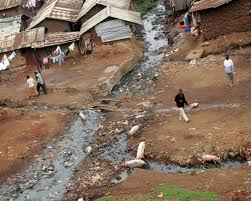 The plant could be raised in a second or third world country where sanitation is still in the Dark Ages, or by a first-world businesses trying to cut corners. Then there are the pesticides, herbicides and growth hormones. Let’s not forget as well all the people who handle the plant from the ground to the store shelf. There’s a lot of opportunity there for the plant to not be wholesome by the time it gets to you. The Chain of Contamination can be quite long.
The plant could be raised in a second or third world country where sanitation is still in the Dark Ages, or by a first-world businesses trying to cut corners. Then there are the pesticides, herbicides and growth hormones. Let’s not forget as well all the people who handle the plant from the ground to the store shelf. There’s a lot of opportunity there for the plant to not be wholesome by the time it gets to you. The Chain of Contamination can be quite long.
That said, what of the wild plant? I walk in the woods or field and harvest it. My hands are the only ones that touch it. Neither the soil nor it have been treated with anything. The only water is rainwater. And the plant is genetically original and nutritionally superior to the store-bought equivalents. That is perhaps the best case scenario and not impossible. The chances for contamination are much less.
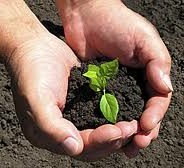 I used to know an old Italian organic gardener in Deltona, Florida, named Rudy Picconi. He was doing organic gardening decades before it was fashionable. The state used to send agents to his little backyard to see why he was such a successful gardener who did not use pesticides or fertilizer (his solution to fire ants was novel.) I asked him back in the early 80?s about insects bothering his plants. He said he used a wide variety of natural ways to keep them at bay. But, he said, “you have to let the insects win some of the time.” There is more wisdom in that than one first assumes.
I used to know an old Italian organic gardener in Deltona, Florida, named Rudy Picconi. He was doing organic gardening decades before it was fashionable. The state used to send agents to his little backyard to see why he was such a successful gardener who did not use pesticides or fertilizer (his solution to fire ants was novel.) I asked him back in the early 80?s about insects bothering his plants. He said he used a wide variety of natural ways to keep them at bay. But, he said, “you have to let the insects win some of the time.” There is more wisdom in that than one first assumes.
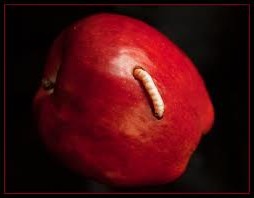 Think of the person who will not eat the wild apple because it has a worm hole. The worm hole tells you the apple is wholesome, as do a few holes in spinach leaves, or a blemish here and there on a beet. Do you really think chemicalized food that kills other creatures is more wholesome than natural food? If the insect can live off it so can you. If it kills the insect you might want to reconsider that as food. Also when our ancestors found a worm in an apple it was extra protein, not something to be tossed away.
Think of the person who will not eat the wild apple because it has a worm hole. The worm hole tells you the apple is wholesome, as do a few holes in spinach leaves, or a blemish here and there on a beet. Do you really think chemicalized food that kills other creatures is more wholesome than natural food? If the insect can live off it so can you. If it kills the insect you might want to reconsider that as food. Also when our ancestors found a worm in an apple it was extra protein, not something to be tossed away.
I am not saying insects and humans are alike or affected by the same things. Clearly we are different creatures but we share being alive and that makes us vulnerable. Given the bad record of food chemicals it seems prudent to lessen the chemist in the kitchen, and the environment.
 As for irradiated food… it might just be another form of sterilization, but I prefer food that has retained its natural ability to rot. If it can’t support something as simple as a bacteria I’m not sure it is good for me. Like genetically modified crops, irradiated food has not been around for centuries to prove it is wholesome. Perhaps in a century or two there will be enough of such food consumed for a good decision to be made. But right now the safety and any possible effects is a for-profit guess.
As for irradiated food… it might just be another form of sterilization, but I prefer food that has retained its natural ability to rot. If it can’t support something as simple as a bacteria I’m not sure it is good for me. Like genetically modified crops, irradiated food has not been around for centuries to prove it is wholesome. Perhaps in a century or two there will be enough of such food consumed for a good decision to be made. But right now the safety and any possible effects is a for-profit guess.
Setting aside bad food advice from dogmatic doctors — read Good Calorie Bad Calorie by Gary Taubs, and his new book is Why We Get Fat – one of the main problems we have is a lot of our food really isn’t food. It is preprocessed stuff and additives. An amalgamation in a box needs a label that says new, improved and healthy. An apple doesn’t. However, another problem is much of the real food is also cursed by the chemist. The only sustenance untouched is wild food, and it looks better every day.
I’m not against progress or science but I have lived enough to know that empiricism and science are great but limited tools. Their ability to be descriptive of reality is often woefully exaggerated. That’s when the for-profit guessing begins. And that’s when our health suffers.
What Do You See #16: Last week the major edible in the picture were False Hawk’s Beard, Pellitory and Bitter Cress.
If you would like to donate to Eat The Weeds please click here.

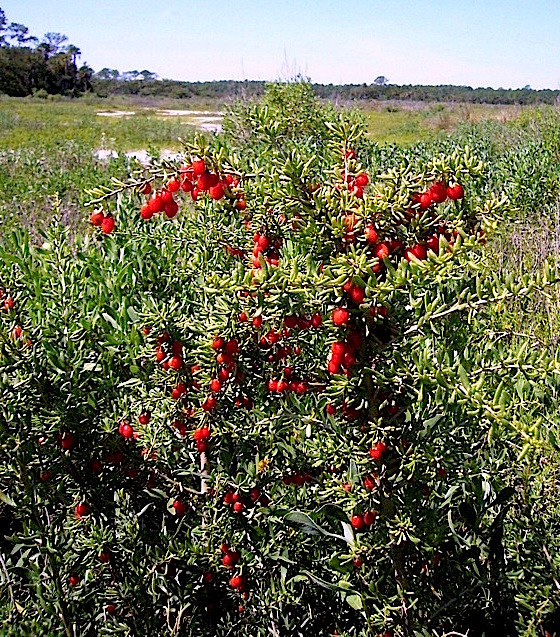
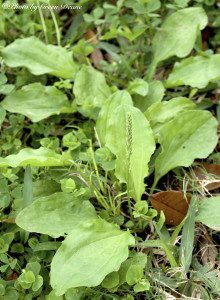
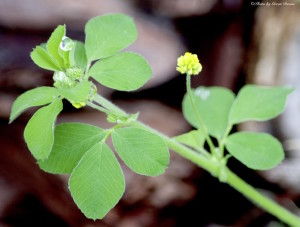
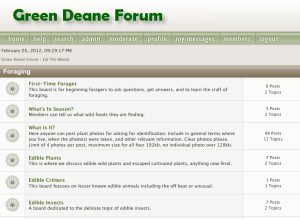
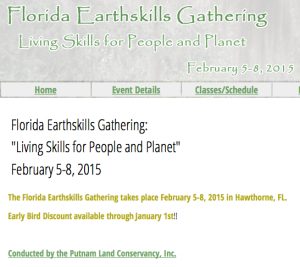
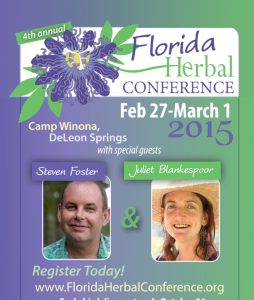
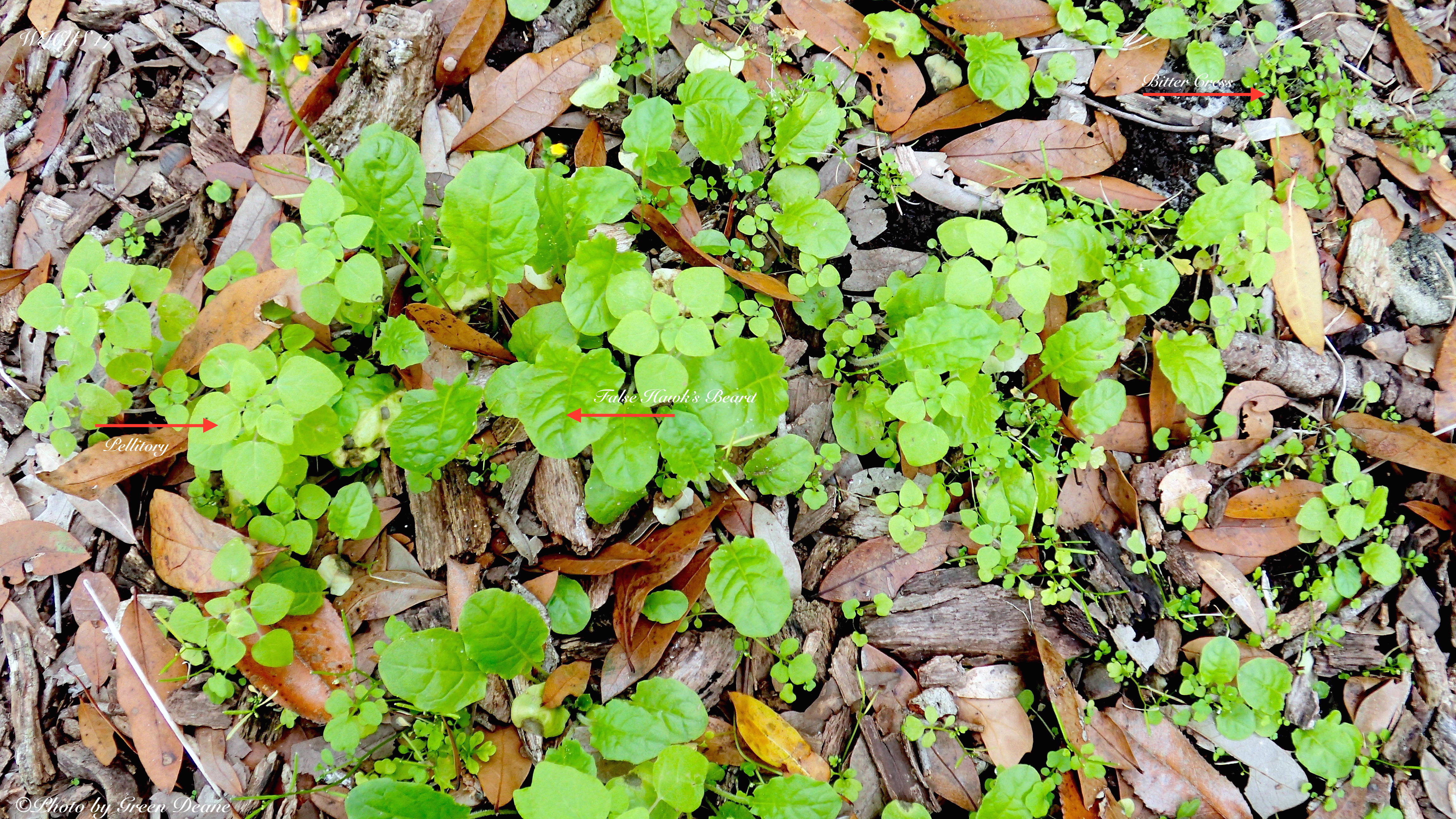

have you read the information on salt tolerant plants by N P Yensen. He believes these plants will save civilization, solving food, energy, global warming, land use, oxygen depletion, and other problems (no kidding, I watched a conference on global warming sit stunned as he explained his ideas, and then the conference exploded in applause).
Howdy Deane, you mentioned a while back about a 10th DVD you are working on. What’s happening? Great job with the previous 9.
Rick
Bluffton, SC
I am hopeful that in March I can start making videos again.
Greene, speaking of nutrition. Here’s something I found not long ago, in my never ending research. It is said, that a fruit (or any part of a plant for that matter), after it is picked from its plant, “can” lose “up to” 50% of its nutrients within 24 hours. The loss slows after that. That being said, any store bought produce has suffered a huge nutrition loss. That got me to researching how and what destroys nutrition. The list is endless, I suggest anyone interested, to research that, along with pros and cons of preserving food. The way around it, is to eat it fresh from the plant, which is why these “raw food diet” people preach it all the time. That’s why I have been talking so much about the juicer, and my plans on tapping into that nutrition, something I’ve not had much of in my life leading up to now. Who woulda’ thunk it?
I support your dislike for GMO and processed foods. It is all developed with profit in mind. The head of the FDA is a former GMO company executive, paving the way to hurry the approval of such foods for public consumption. And if what I read is true, those folks only eat organic, non GMO foods. Makes ya think?, makes me think.
Anyway, that’s the world we live in. Hail to the all mighty dollar.
Happy foraging everyone. While foraging, collect seeds, help spread them around for nature, keep some for yourself and plant them near where you live or in your garden. It’s a win win for all.
And the novel solution to fire ants was…?
It requires two people, each with a larger shovel. Each person takes a large shovelful of ants and sand from one nest and exchanges it with the other person doing the same thing. The ants kill each other and invade each other’s nests.
I’ve tried that method several times with very little success. 🙁 This was prior to getting chickens. Now the chickens eat those little white eggs. They don’t get all of them, but help keep them from overtaking my yard. 🙂
Initiated by your “Chain of Contamination”, and the experience of Rudi Picconi, here is part of my simple experience on that matter. We used during our first years of growth to eat “figs” off the Sycamore fig ( Ficus sycomorus) ripe and fresh after cutting the fruit into two halves, scraping part of the pulp, and enjoying the sight of fleeing tiny mosquito like insects. It was tasty, nutritious and healthy. Furthermore we’ve noticed that insects, birds and animals – specially monkeys – are more selective than man in terms of picking and edibility of fruits e.g. berries, palm dates, bananas, mangos, etc. fresh and ripe. Thus we used to choose those fruits wherein we find a trace of them.
Today it happened after introducing my too cold yogurt in the “ microwave” so as to be suitable for eating, I’ve witnessed a distinct change in taste. I wished I’d rather have it as fresh milk directly from the cow.
I think without going into details the following two holy verses strongly support our above belief: “And it is He Who produces gardens trellised and untrellised, and date – palms and crops of different shape and taste (its fruits and seeds) and olives, and pomegranates, similar(in kind) and different ( in taste). Eat of their fruit when they ripen; but pay the due (Zakat) on the day of its harvest. “ { [Youuf (Joseph) }said: “For seven consecutive years, you shall sow as usual and that (the harvest) which you reep you shall leave in ears, except a little of it which you may eat. “
If you live where fracking is being done, you can’t even trust your well water…